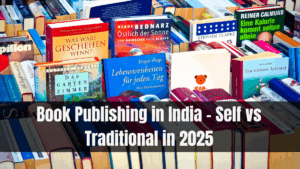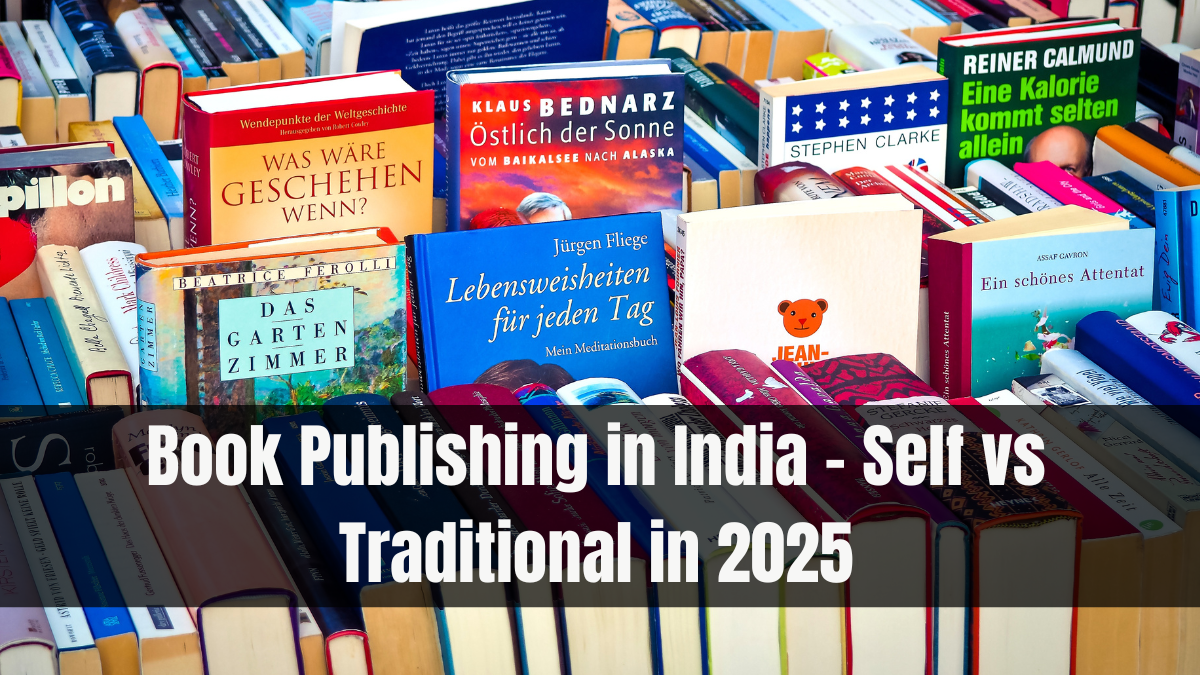The publishing industry in India has undergone a significant transformation in recent years. In 2025, aspiring authors have more power and flexibility than ever to share their stories, thanks to the boom of self-publishing platforms. Yet, traditional publishing still holds value for those seeking legacy recognition, editorial support, and wide offline distribution.
So which route should authors take in the current climate? Let’s break down the latest insights into Book Publishing in India and compare both models in depth.

The Rise of Self-Publishing in India
India’s digital shift has democratized publishing. Self-publishing has become an empowering tool for writers who want creative control, faster publishing timelines, and better royalty rates.
Popular platforms in India include:
-
Notion Press
-
Pothi.com
-
BlueRose
-
Kindle Direct Publishing (KDP)
-
White Falcon Publishing
Why authors are choosing self-publishing:
-
Direct access to Amazon, Flipkart, and global readers
-
Retain copyright and full control of content
-
Flexible pricing and revisions
-
Publish in regional languages
-
No waiting for approval from publishers
In 2025, over 40% of debut Indian authors are releasing their first books through self-publishing.
Strength of Traditional Publishing
Despite the rise of digital publishing, traditional publishers like Penguin India, HarperCollins, Rupa, and Westland continue to shape the literary scene.
They offer:
-
Expert editorial guidance
-
PR and marketing support
-
Access to top bookstores and media coverage
-
Literary prestige and awards eligibility
However, challenges include:
-
Long waiting periods (6–12 months or more)
-
Lower royalty (typically 7%–12%)
-
Strict contracts with limited creative freedom
-
Rejection if market potential is unclear
Traditional publishing remains ideal for authors targeting critical acclaim, literary festivals, and physical distribution networks.
Key Differences: Self vs Traditional Publishing
| Feature | Self-Publishing | Traditional Publishing |
|---|---|---|
| Time to Publish | 1–3 weeks | 6–12 months |
| Royalty Rates | 30%–70% | 7%–12% |
| Creative Control | Full | Limited (editorial and cover changes apply) |
| Upfront Cost | Yes (₹5,000–₹50,000 depending on service) | No |
| Distribution | Online (Amazon, Flipkart, own website) | Online + Offline Bookstores |
| Marketing Support | Author-driven | Publisher-led (select titles) |
Book Publishing in India – 2025 Trends to Know
The publishing landscape is more hybrid than ever before:
-
Many authors start with self-publishing, build an audience, and then get signed by traditional publishers.
-
Publishers are scouting new voices on Instagram, blogs, and YouTube, not just literary agents.
-
Audiobooks and eBooks are now part of standard publishing deals.
-
Non-fiction, romance, and self-help remain top-performing genres.
Self-publishing is especially popular for:
-
Niche topics (e.g., startup guides, spirituality, short fiction)
-
Regional language books
-
Poets and first-time writers building a personal brand
Pros and Cons for Indian Authors
Self-Publishing Pros:
-
Quick release
-
Better earnings per sale
-
Ability to test multiple genres
-
Build reader email lists directly
Self-Publishing Cons:
-
Upfront costs
-
No professional editing unless paid for
-
Requires personal marketing effort
Traditional Publishing Pros:
-
Literary validation
-
Higher credibility in bookstores
-
Possible entry into bestseller lists
Traditional Publishing Cons:
-
Competitive and slow
-
Low royalty share
-
High rejection rate
Best Route for New Writers in 2025
For many writers, a combination of both models works best. Start by self-publishing a well-edited eBook, gain readership, and use that traction to approach traditional publishers. This route shows market potential, giving you leverage.
Authors with strong platforms (YouTube channels, podcasts, LinkedIn following) often find self-publishing more profitable. Meanwhile, writers aiming for awards, literary events, and long-term shelf presence may still lean toward traditional routes.
FAQs
Which is better for first-time authors – self or traditional publishing?
Self-publishing is ideal for first-timers who want speed and control. Traditional publishing suits those who can wait and want editorial support.
Can I switch from self-publishing to traditional publishing later?
Yes. If your self-published book performs well, traditional publishers may offer a new deal for reprint or future titles.
How much does it cost to self-publish a book in India?
Costs range from ₹5,000 to ₹50,000 depending on design, editing, ISBN, and marketing packages.
Are royalties better in self-publishing?
Yes. Self-published authors often earn 30% to 70% per sale, compared to 7%–12% in traditional publishing.
Do self-published books get into bookstores?
Usually no, unless the author negotiates individually. Traditional publishers handle bookstore placement better.




